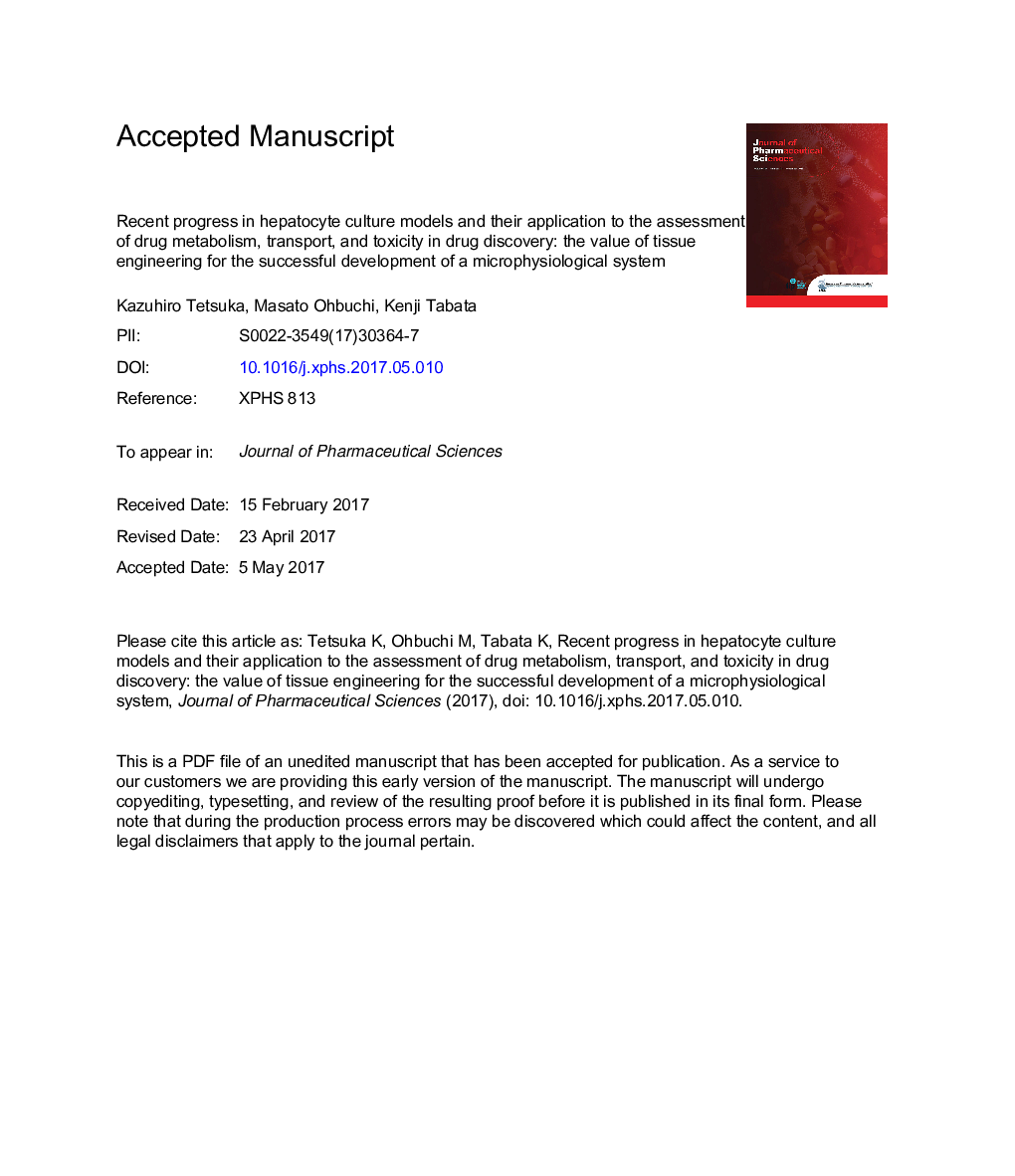| Article ID | Journal | Published Year | Pages | File Type |
|---|---|---|---|---|
| 8513889 | Journal of Pharmaceutical Sciences | 2017 | 48 Pages |
Abstract
Tissue engineering technology has provided many useful culture models. This article reviews the merits of this technology in a hepatocyte culture system and describes the applications of the sandwich-cultured hepatocyte model in drug discovery. In addition, we also review recent investigations of the utility of the 3-dimensional bioprinted human liver tissue model and spheroid model. Finally, we present the future direction and developmental challenges of a hepatocyte culture model for the successful establishment of a microphysiological system, represented as an organ-on-a-chip and even as a human-on-a-chip. A merit of advanced culture models is their potential use for detecting hepatotoxicity through repeated exposure to chemicals as they allow long-term culture while maintaining hepatocyte functionality. As a future direction, such advanced hepatocyte culture systems can be connected to other tissue models for evaluating tissue-to-tissue interaction beyond cell-to-cell interaction. This combination of culture models could represent parts of the human body in a microphysiological system.
Keywords
MPAGDMPKMRPPDMSAPAPMPAADMEGSH3-dimensionalHepatocytesSCHAcetaminophenOstmembrane transport/transportersBiliary excretionToxicologymycophenolic acidMetabolismdrug metabolism and pharmacokineticsTissue engineeringDispositionHepatobiliary dispositionmultidrug resistance-associated proteinPolydimethylsiloxaneCell cultureGlutathione
Related Topics
Health Sciences
Pharmacology, Toxicology and Pharmaceutical Science
Drug Discovery
Authors
Kazuhiro Tetsuka, Masato Ohbuchi, Kenji Tabata,
